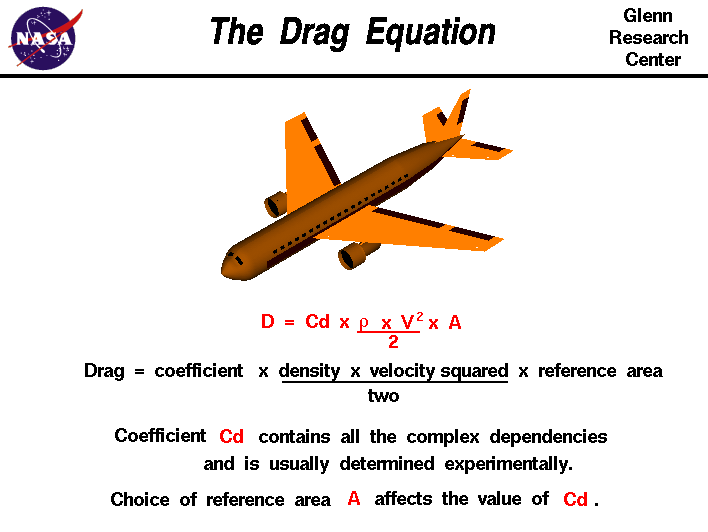It also depends on drag coefficient, which you are still trying to dismiss. From your own diagram:
This shows that your method of estimating drag by eyeballing is fundamentally flawed, thus you have no knowledge on the drag of the J-20 or the F-22 to conclude anything.
The drag coefficient is a number that aerodynamicists use to model all of the complex dependencies of shape, inclination, and flow conditions on aircraft drag.
This equation is simply a rearrangement of the drag equation where we solve for the drag coefficient in terms of the other variables. The drag coefficient Cd is equal to the drag D divided by the quantity: density r times half the velocity V squared times the reference area A. Cd = D / (A * .5 * r * V^2)
The quantity one half the density times the velocity squared is called the dynamic pressure q. So
Cd = D / (q * A)
The drag coefficient then expresses the ratio of the drag force to the force produced by



